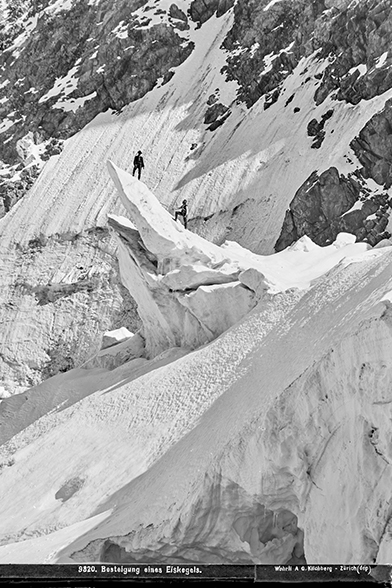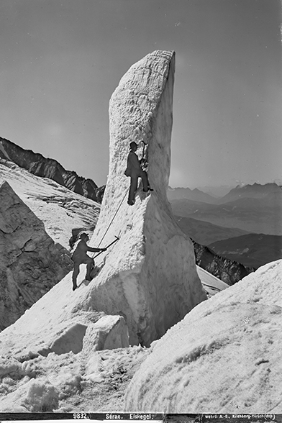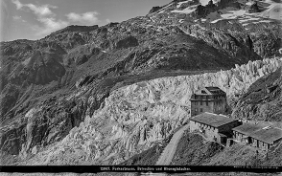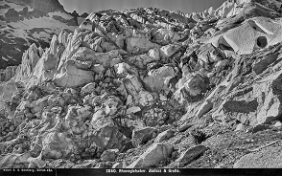Trekking up a glacier in a long dress: The High Alps became a travel destination for the general public around the end of the 19th century thanks in part to the development of Alpine photography. The Wehrli brothers – mountain climbers and photographers who ran a picture postcard publishing house in Kilchberg – played no small part in helping to popularise Alpine landscapes.
By Kathrin Gurtner
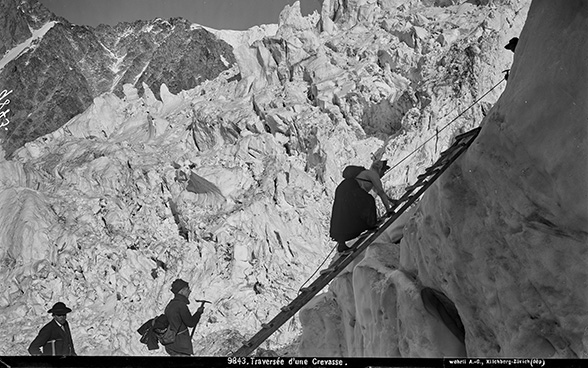
Superstition and fear kept the Alps from being developed well into the 18th century. Artists also kept their distance. Landscape painters idealised the world of the mountains without ever having set foot anywhere near the High Alps.
On a map of Switzerland from 1769, pastor and geographer Gabriel Walser (1695–1776) described glacial areas as “abominable ice mountains”. It was only later that scientific excursions during the Enlightenment and concepts of nature from the Romantic period were able to arouse interest in the beauty and majesty of these mountain landscapes.
A parallel development to the research and exploration of the Alps was the development of Alpine photography, which unleashed a new enthusiasm for mountain sports among the general public. Right from the start, Alpine photography entailed special artistic and technical challenges and involved extraordinary feats and incalculable risks. The lighting conditions are intense and the chemicals sensitive to weather and air pressure, quickly turning photo shoots into failures. Even though dry gelatine plates became available from 1880 onwards, making it unnecessary to develop film during expeditions, photographers still had to haul material weighing at least 15 kg.
“I’m committed to climbing at least one mountain per year, or perhaps several”
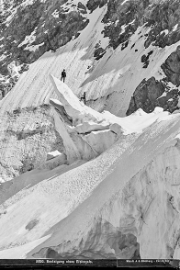
This passion for mountain climbing and admiration of the High Alps expressed in a letter by Conrad Gessner (1516–1565) to a friend also inspired the Alpine photography of the 19th century. In the beginning, the High Alps were only accessible to researchers and aristocrats, but this was changed by the arrival of affordable picture postcards, which brought the raw beauty of the mountains to less economically privileged classes and inspired feelings of longing in the general public.
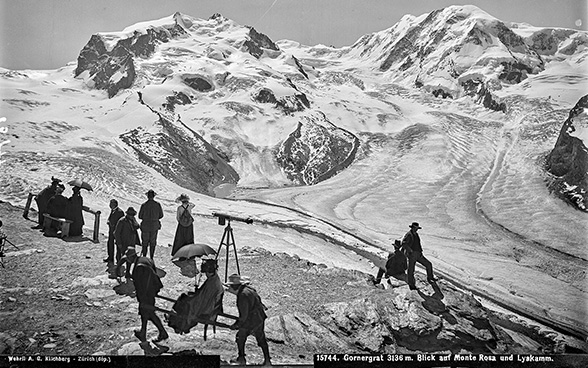
The photographs show courageous men – and, astonishingly for the time, women – scrambling, climbing and balancing across huge crevasses and scaling sharp ice cones. From today’s perspective, the tourists were woefully under-equipped, in parts wearing chic hats and long skirts, holding parasols and ice picks as they explored the glacial landscapes. Awkwardly equipped with ladders and often only poorly secured, these bold climbers made their way through massive ice formations that can only be dreamt of in today’s era of climate change.
“Now no one is going to believe how beautiful it was here...”
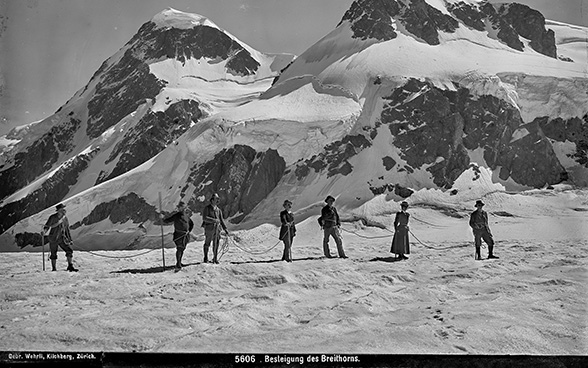
In the 1974 hit song “Du hast den Farbfilm vergessen” (You forgot the colour film), singer Nina Hagen expresses anger and disappointment that she can only photograph her holiday in depressing black-and-white film. Capturing experiences with maximum emotional impact is no less relevant today and also played an important role in the 19th century. At the time, no one was bothered by the lack of colour film – in fact, the Wehrli brothers know how to use the black-and-white medium to maximum advantage.
Bruno (1867–1927), Harry (1869–1906) and Artur (1876–1915) Wehrli were among the most successful photographers in Switzerland at the turn of the 20th century. Starting in 1895, they ran a thriving photography shop in Kilchberg, and they founded their own publishing house in 1904 to take part in the booming business of selling picture postcards. Experts in both photography and mountain climbing, the Wehrli brothers played a key role in the visual exploration of the Alps and helped shape the official image of Switzerland with photographs of mighty four-thousand-meter peaks and glacier landscapes. Today, with glaciers around the world melting, the Wehrli images become infused with a new feeling of urgency.
Their powerful shots have a signature “Wehrli look” that makes them almost unmistakable: sharp contrast in highly saturated black and white, a love of detail and sharpness, clarity of content and an avoidance of dramatic sentimentality. In addition, the images often feature a black border with a caption.
Starting in 1895 in Kilchberg, ZH, the Wehrli brothers made a name for themselves throughout Switzerland with their almost documentary-like landscape and settlement photography. In 1904, they founded the publishing house Wehrli AG. In 1920, the publishing company Orell Füssli acquired a majority stake in Wehrli AG. In 1924, a merger took place with Photoglob AG in Zurich. After transitioning to the production of colour picture postcards, Photoglob AG gave the Federal Archives of Historic Monuments (FAHM) its documents relating to all production stages of the black-and-white picture postcards, including over 160,000 pieces of image media. In 2007, the FAHM became part of the Swiss National Library, and Photoglob granted the NL all rights to the photographs.
Bibliography and sources
Last modification 22.04.2024
Contact
Swiss National Library
Prints and Drawings Department
Hallwylstrasse 15
3003
Bern
Switzerland
Phone
+41 58 462 89 71


